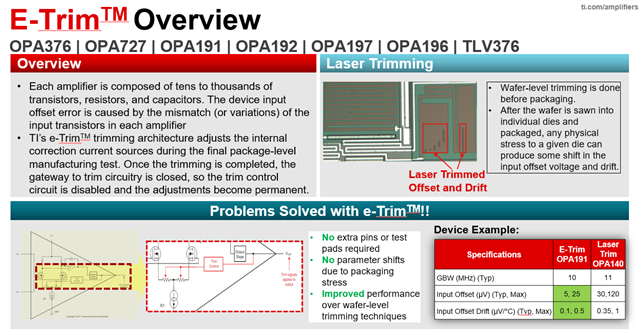Other Parts Discussed in Thread: OPA4192,
OPA4192 Op Amps have an "e-trim" offset removal circuit.
- How permanent is this circuit (does its effectiveness age)?
- What is the impact if this "e-trim" circuit fails?
- OPA4192 Op Amps have protection diodes on the inputs, which normally would be a problem for a buffer driven by a mux, although the datasheet says this part overcomes the normal limitations with a "unique" feature. Is this "unique" feature understood and are there any potential undesirable impacts?
- Does Figure 56 of the datasheet indicate the settling time will be longer if the protection feature is engage (vs Figure 40/42)?




